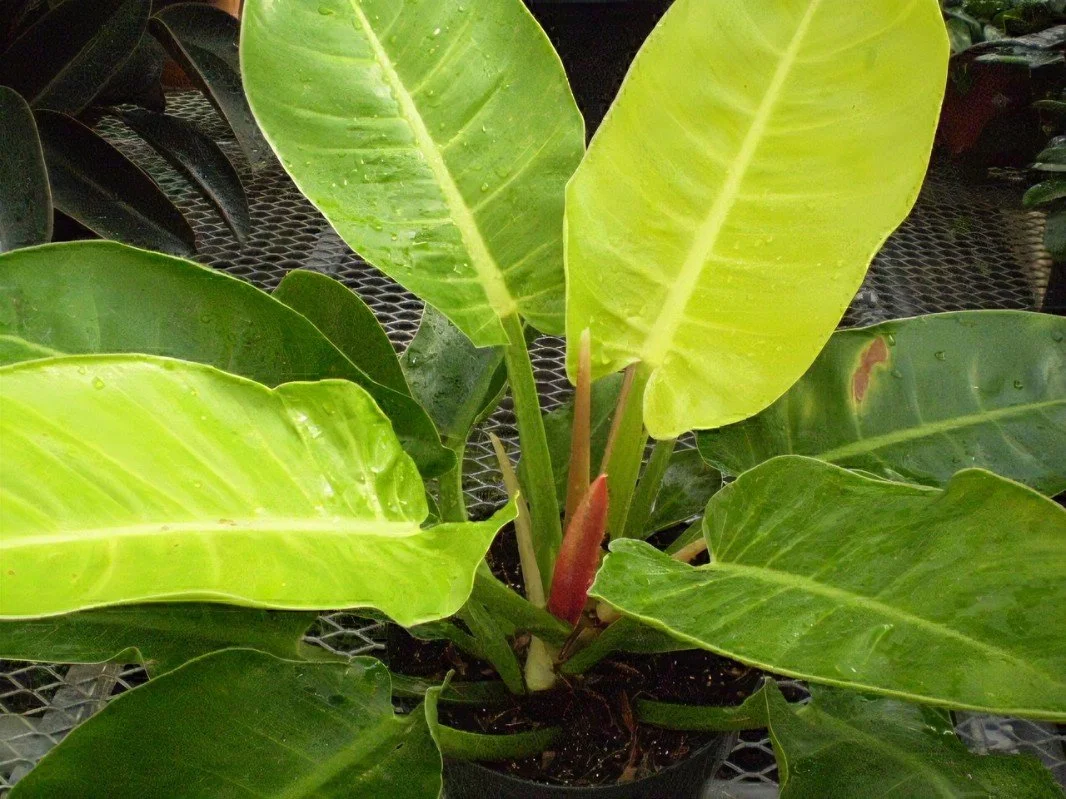Philodendron Care Guide
With its vibrant, trailing leaves and low-maintenance nature, the philodendron is a favorite for plant lovers of all levels. This care guide covers key tips for success—from ideal lighting and watering to humidity needs—so your philodendron stays lush and healthy, adding a touch of the tropics to your home.
1. Placement
Philodendrons thrive in bright, indirect light. They can tolerate lower light conditions but may not grow as vigorously. Avoid direct sunlight, as it can scorch their leaves. Ideal spots include:
Indoors: Near a north or east-facing window where they receive filtered sunlight or in a room with bright, indirect light.
Outdoors: In shaded areas or under trees where they get dappled sunlight.
2. Watering
Frequency: Allow the top inch or two of soil to dry out between waterings. Water thoroughly until water drains from the bottom of the pot.
Signs of Overwatering: Yellowing leaves, wilting, or soggy soil.
Signs of Underwatering: Drooping leaves, dry soil, or slow growth.
Water Quality: Use room temperature water and avoid letting the plant sit in water, as it can lead to root rot.
3. Soil & Potting
Soil: Use well-draining potting mix, such as a mix formulated for indoor plants or a blend of peat moss, perlite, and/or pine bark.
Pot Size: Choose a pot with drainage holes that is slightly larger than the current root ball. Repot every 1-2 years to refresh the soil and provide more space for growth.
4. Pruning & Maintenance
Pruning: Trim yellow or damaged leaves regularly to maintain plant health and appearance. Use clean, sharp scissors or pruning shears.
Cleaning: Wipe dust off the leaves gently with a damp cloth to allow better light absorption.
5. Fertilizing
Frequency: Feed with a balanced liquid fertilizer every 4-6 weeks during the growing season (spring and summer).
Amount: Dilute fertilizer to half strength to avoid over-fertilization, which can damage the roots.
6. Propagation
Methods: Philodendrons can be propagated easily through stem cuttings.
Cutting Propagation: Take a 4-6 inch cutting below a node, remove lower leaves, and place in water or moist soil until roots develop.
Rooting: Roots typically form within a few weeks. Once rooted, transplant into a pot with well-draining soil.
7. Troubleshooting
Yellow Leaves: Often a sign of overwatering or inadequate light.
Brown Tips: Dry air or inconsistent watering.
Pests: Common pests include spider mites, mealybugs, and aphids. Treat with insecticidal soap or neem oil.
Diseases: Root rot can occur from overwatering. Improve drainage and adjust watering habits to prevent.
8. Seasonal Care
Spring and Summer: Philodendrons actively grow during these seasons. Increase watering and fertilization.
Fall and Winter: Growth slows down. Reduce watering and fertilization but maintain consistent care.
9. Repotting
Timing: Repot every 1-2 years in spring if the plant has outgrown its pot or the soil has become compacted.
Process: Gently remove the plant from its pot, shake off old soil, inspect roots for health, and replant in a slightly larger pot with fresh potting mix.
Stress Management: Water lightly after repotting and avoid direct sunlight until the plant adjusts.

